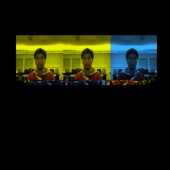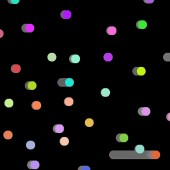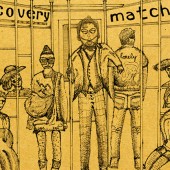
| THE AWARD |
| CATEGORIES |
| REGISTRATION |
| SUBMIT YOUR WORK |
| ENTRY INSTRUCTIONS |
| TERMS & CONDITIONS |
| PUBLICATIONS |
| DATES & FEES |
| METHODOLOGY |
| CONTACT |
| WINNERS |
| PRESS ROOM |
| GET INVOLVED |
| DESIGN PRIZE |
| DESIGN STORE |
| THE AWARD | JURY | CATEGORIES | REGISTRATION | PRESS | WINNERS | PUBLICATIONS | ENTRY INSTRUCTIONS |
Minyen Hsieh Portfolio Interactive by MinYen |
Home > Winners > Design #28420 >Interview |
 |
|
FS: What is the main principle, idea and inspiration behind your design?
CH: I love to create an interactive platform that users can contribute their own stories themselves when they interactive with my works.
FS: What has been your main focus in designing this work? Especially what did you want to achieve?
CH: I try to bring humanity into interactive works.
FS: What are your future plans for this award winning design?
CH: I will keep creating interactive pieces across different platforms to engage users from two perspectives. One is to tell a story and the other is to let users create their own stories through my works.
FS: How long did it take you to design this particular concept?
CH: It depends the size and technique of the projects. Some projects I worked for a year, and some projects I worked for a couple of month.
FS: Why did you design this particular concept? Was this design commissioned or did you decide to pursuit an inspiration?
CH: Panic Hope Despair Death was inspired from my father. The rest of the projects are inspired from everything moment in my daily life.
FS: Is your design being produced or used by another company, or do you plan to sell or lease the production rights or do you intent to produce your work yourself?
CH: I would like to show my works around in the museums or exhibitions. I try to let more people play my works.
FS: What made you design this particular type of work?
CH: Concepts will transform to motivation to produce different works. I will do research after conceptualize the work. Then I will start to build my works and do user testing.
FS: Where there any other designs and/or designers that helped the influence the design of your work?
CH: I usually check out Fwa and awwwards website which bring me a lot of fresh ideas and cases. For interactive installations, I was inspired by interactive artists such as Zachary Liberman, Anthony Gromley, Tony Ourseler, and Rafael Lozano-Hammer. I also get inspiration from museums.
FS: Who is the target customer for his design?
CH: I usually design for public.
FS: What sets this design apart from other similar or resembling concepts?
CH: I always want to create unique interactive works, so I will keep revising my ideas.
FS: How did you come up with the name for this design? What does it mean?
CH: I come up with names pretty straightforward, and I would like to put some clues into the name which engage viewers, sometimes.
FS: Which design tools did you use when you were working on this project?
CH: I like to sketch my ideas, and then I use Adobe Creative Suite a lot. After designing the concept and visual, I will use the programming to build the works such as Processing, Flash, Max/Msp/Jitter, and openFrameworks and so on.
FS: What is the most unique aspect of your design?
CH: Combine humanity and technology.
FS: Who did you collaborate with for this design? Did you work with people with technical / specialized skills?
CH: I usually create pieces by myself, but I would love to work with people from different backgrounds if I have any chances.
FS: What is the role of technology in this particular design?
CH: Technology plays an important role because "Interactive" is generated by technology. But we should be not limited by technology. I always focus on concepts first, and try to figure out which technology can help me achieve my concepts.
FS: Is your design influenced by data or analytical research in any way? What kind of research did you conduct for making this design?
CH: I usually research either related fields or technology before building the works. Research can help me shape my ideas more unique.
FS: What are some of the challenges you faced during the design/realization of your concept?
CH: I would like to combine humanity and technology, but its hard to find the balance between two of these, sometimes. The concepts I want to tell is more important rather than technology itself.
FS: How did you decide to submit your design to an international design competition?
CH: Let more people see my works and look for opportunities.
FS: What did you learn or how did you improve yourself during the designing of this work?
CH: I try to balance the limitation of technology and my concepts. I try to absorbe any possibilites when I create the works.
FS: Any other things you would like to cover that have not been covered in these questions?
CH: My Taiwan's background added a unique quality and specialty to my designing and artistic perspective.
FS: Thank you for providing us with this opportunity to interview you.
A' Design Award and Competitions grants rights to press members and bloggers to use parts of this interview. This interview is provided as it is; DesignPRWire and A' Design Award and Competitions cannot be held responsible for the answers given by participating designers.
| SOCIAL |
| + Add to Likes / Favorites | Send to My Email | Comment | View Press-Release | Translations |




